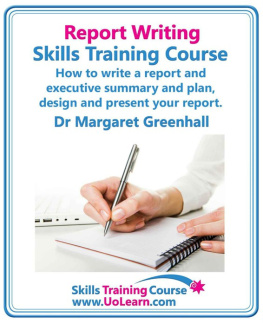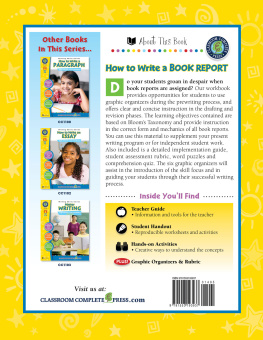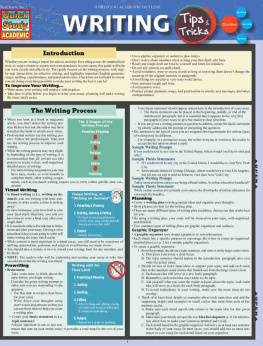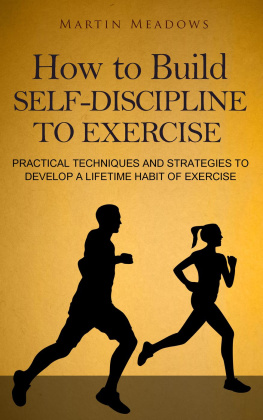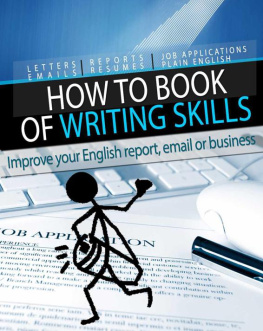Contents
Report writing skills training course.
How to write a report and executive summary, and plan, design, and present your report. An easy format for writing business reports.
Copyright 2013 by Margaret Greenhall.
All rights reserved. No part of this book may be reproduced either electronically or on paper without permission in writing from the publisher, except for passages of less than 500 words for purposes of review.
ebook ISBN 978-1-84937-080-6
Dedication
I would like to say thank you to all five of my parents, my first ones who have been with me throughout Christine and Ken Vaughan, my extra one whilst growing up Margaret Jones and my two that I was lucky enough to share when I got married, Irene and Gordon Greenhall. They have all helped me in so many ways and I have grown in their love and support.
Id like to say a massive thank you to Martin, my husband, who has supported me through so many ventures and put up with my odd working habits. I love you very much.
Finally a thank you to Sally, my unofficial mentor, without whom this particular book wouldnt have been written as she was willing to let me work with her staff to help train them in report writing skills.
Thank you all, Love Margaret
The aim of this book
Is to teach people, with various levels of experience, how to plan, write and present information as reports. The book includes a range of opportunities to practice and develop their skills.
Praise for Report Writing
Very useful, it has given me a great number of useful tips and information.
This will help me to organize and structure my work in a logical way.
I will now have a structure to use when preparing future reports and I will feel much more confident in doing this.
I now understand how important preparation is when writing a report.
The list of eight questions is fantastic, I will always use this for my reports from now on.
Very informative and useful.
These techniques can be applied in my work straight away.
Extremely interesting and useful vital preparation if you need to write reports for work.
Very easy to take back into the work environment.

About the Author: Dr Margaret Greenhall
Margaret was a chemistry lecturer for eight years and it was during this time that she was asked to teach the foundation study skills to the new students. This started her interest in how people learn and how the learning environment can help them learn better. She also was involved in educating adults through the access to science course and a special project for the millennium where she helped people discover an interest in science by wading in a river and catching plastic ducks. She moved to staff development and again learned more about how people share information with each other.
She then moved to an administrative role at the University of Manchester and was suddenly confronted with tasks that shed never done before. One of these was to write reports that went to the highest level of the university, the vice chancellors. This was scary, people assumed that coming from a highly professional background that she would know what to do. This got her investigating how to write reports and she realized that this connected with many of the skills shed worked on with her students about taking in and sharing information.
In 2003 Margaret left the university to start a training business, specializing in helping people to understand and share information easily and efficiently. This includes topics such as speed reading, improve your memory, creative problem solving and report writing. This book on report writing combines and shares the unique style of creative planning and sharing information.
Margaret can be contacted at
Executive Summary for Report Writing Skills Training Course
The aim of this book
Is to teach people, with various levels of experience, how to plan, write and present information as reports. The book includes a range of opportunities to practice and develop their skills.
Excellent reports
An excellent report is a concise and accurate record of information that contains only the data relevant to the readership and record keeping process. It will be neatly laid out and easy to read with a simple structure that allows easy access to the information.
Setting objectives
Before you start to write your report you need to work through a series of 8 questions and write a clear objective for the report. This should then be checked by the person who initiated the report.
Planning reports
Before you start to write the report you need to create a plan for the sections. The suggested technique is to separate this out into steps, so that you can think about what the information is and then organize it. You then need to gather all your source material together and advice is given on how to read a large amount of material.
Types of reports
There are three main types of report
1. Information
2. Research
3. Proposal
Each has different possible sections that could be included. All benefit from a title page, aim, executive summary and bibliography. In addition the components in the following table may be added. Some thought needs to be given as to whether all sections are necessary and what their order should be.
Section headings should be meaningful to your audience, not just single words.

Executive summaries
A summary of the report can be included at the start, this should be no more than 5% of the report length. It should be in the same order as the report and should only include material that is in the main report.
Organizing the report
To make things easy for people to remember, have white space, give no more than 4 ideas at once and people tend to remember start, ends and anything unusual.
Layout style
The recommended font style is sans serif (straight) and 12 point. People are advised to use the style formatting capabilities of their software as it makes both consistency of style and generation of contents pages easier.
There are also additional materials on grammar and diagrams on www.uolearn.com
Editing reports
Editing is about checking that the content matches the original objective and making the report as concise and easy to read as possible.
Proofreading
Proofreading is about looking for errors such as grammar and spelling mistakes. It should not involve changes to the content.
Printing and distribution
Time needs to be left before the deadline to make sure that the printers can finish the printing. A distribution list should be made to ensure everyone who needs one gets a copy.
Work flow for writing a report
Asked to write a report
8 questions
Write objectives
Check with the originator
Agree objectives and timescale
Brainstorm the content
Collect all the data you need
Read all the data sources
Incubation time 1-2 days
Decide the type of report
Section headings and order
Write report
Edit - cut away excess
Write executive summary
Add in navigation (contents etc)
Proofread - find mistakes
Print/epublish
Distribute
Celebrate


